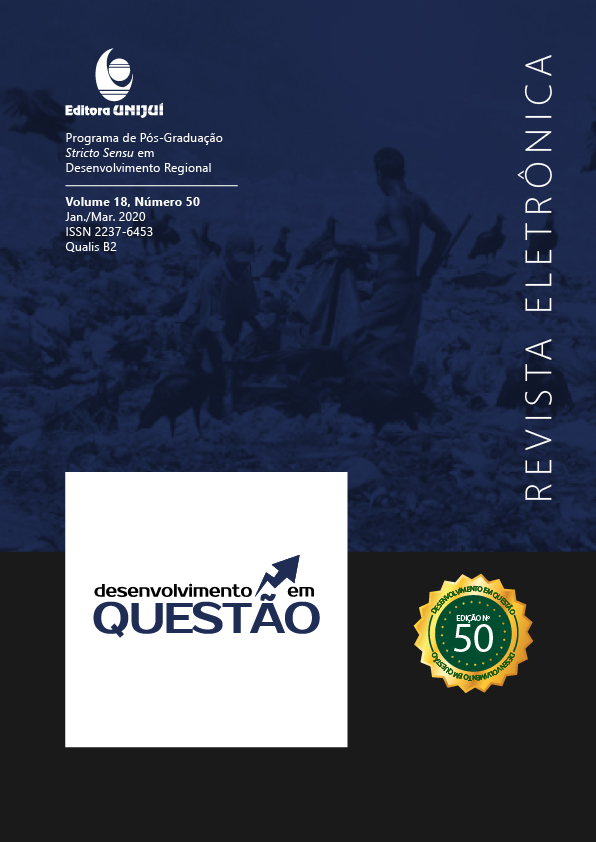Instabilidade Temporal na Produção Agrícola Familiar de Sequeiro no Semiárido do Nordeste Brasileiro
DOI:
https://doi.org/10.21527/2237-6453.2020.50.186-200Palavras-chave:
Agricultura instável. Produção de Alimentos.Pobreza rural, SecaResumo
O objetivo do estudo é estimar instabilidades temporais associadas ao valor da produção, área colhida, produtividade e produção per capita de feijão, mandioca e milho, que são as principais lavouras, cultivadas em regime de sequeiro e predominantemente na forma de consórcios, destinadas à produção de alimentos em unidades agrícolas familiares, nos municípios dos semiáridos dos estados do Ceará e Rio Grande do Norte.O período de análise se estende de 1991 a 2017. Os dados de origem secundária foram levantados junto às Pesquisas Agrícolas Municipais (PAM/IBGE). Utilizaram-se os coeficientes de variação (CV) das variáveis envolvidas na pesquisa para medir a instabilidade. Para criar o índice de instabilidade temporal (INST), que foi o instrumento aferidor da instabilidade agregada dos municípios, se agruparam os CV dos quatro indicadores num único fator. Para tanto se utilizou o método de decomposição em componentes principais da análise fatorial. Os resultados apontaram que todos os municípios estudados apresentam níveis de instabilidade considerados altos ou muito altos. A pesquisa também mostrou que a instabilidadena produção dessas lavouras é maior no semiárido do Rio Grande do Norte do que no estado do Ceará.
Downloads
Publicado
Como Citar
Edição
Seção
Licença
Ao publicar na Revista Desenvolvimento em Questão, os autores concordam com os seguintes termos:
Os trabalhos seguem a licença Creative Commons Atribuição 4.0 Internacional (CC BY 4.0), que permite:
Compartilhar — copiar e redistribuir o material em qualquer meio ou formato;
Adaptar — remixar, transformar e criar a partir do material para qualquer fim, inclusive comercial.
Essas permissões são irrevogáveis, desde que respeitados os seguintes termos:
Atribuição — Atribuição — os autores devem ser devidamente creditados, com link para a licença e indicação de eventuais alterações realizadas.
Sem restrições adicionais — não podem ser aplicadas condições legais ou tecnológicas que restrinjam o uso permitido pela licença.
Avisos:
A licença não se aplica a elementos em domínio público ou cobertos por exceções legais.
A licença não garante todos os direitos necessários para usos específicos (ex.: direitos de imagem, privacidade ou morais).
A revista não se responsabiliza pelas opiniões expressas nos artigos, que são de exclusiva responsabilidade dos autores. O Editor, com o apoio do Comitê Editorial, reserva-se o direito de sugerir ou solicitar modificações quando necessário.
Somente serão aceitos artigos científicos originais, com resultados de pesquisas de interesse que não tenham sido publicados nem submetidos simultaneamente a outro periódico com o mesmo objetivo.
A menção a marcas comerciais ou produtos específicos destina-se apenas à identificação, sem qualquer vínculo promocional por parte dos autores ou da revista.
Contrato de Licença (para artigos publicados a partir de 2025): Os autores mantêm os direitos autorais sobre seu artigo, e concedem a Revista Desenvolvimento em Questão o direito de primeira publicação.











